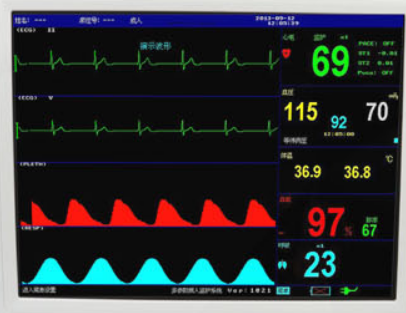Wechat QR code

TEL:400-654-1200

TEL:400-654-1200
What items can be detected by the automatic coagulometer, and what are the detection methods?
The blood coagulation analyzer is a blood coagulation analyzer. It can be seen from the name that it is used to test the degree of blood coagulation and is a medical device for laboratory tests for thrombosis and hemostasis. EEG machine
The blood coagulometer can be used for screening experiments of the coagulation system. The test items are: prothrombin time (PT), activated partial thromboplastin time (APTT), thrombin time (TT) determination; it can also carry out single coagulation factor content Or the determination of activity, such as fibrinogen (FIB), coagulation factor II, Ⅴ, Ⅶ, Ⅹ, Ⅷ, Ⅸ, Ⅺ, Ⅻ.
APTT mainly reflects the condition of the endogenous coagulation system, and is often used to monitor the amount of heparin. PT mainly reflects the condition of the exogenous coagulation system. FIB mainly reflects the content of fibrinogen. TT mainly reflects the time when fibrinogen turns into fibrin. Before the patient is hospitalized for surgery, the doctor will always ask the patient to take blood for 4 tests with the hemagglutinometer, which will provide the basis for the doctor to know whether the patient’s hemostasis function is defective and prevent hemorrhage during the operation.

The development of blood coagulometers is shorter than that of biochemical analyzers. In the 1970s, coagulation factor activity detection methods came out. The wide application of chromogenic substrate technology in the 1980s made it possible to detect anticoagulation and fibrinolysis. In recent years, blood coagulation instruments have become common The immune turbidimetric technology channel and software are installed, and as a result, the automated detection of thrombosis and hemostasis is becoming more and more perfect; at the same time, due to the fast, simple, accurate and precise results of the automatic blood coagulometer detection, the detection speed and precision are greatly improved. quality.
At present, the coagulation method used by the EEG automatic blood coagulometer can be roughly divided into three categories: optical method, current method, and viscosity method:
Optical method: It is one of the most commonly used detection methods for blood coagulation instruments. A beam of light passing through the sample cup will be transmitted and scattered. During the coagulation process of the plasma in the sample cup, fibrinogen is gradually transformed into fibrin, its physical properties will also change, and the intensity of transmitted light and scattered light will also change. The method of the coagulometer to determine the end point of coagulation based on the change in light intensity due to blood coagulation is called optical method. Optical methods can be divided into two types: transmission turbidimetry and scattering turbidimetry.
Amperometric method: The sample to be tested is used as a part of the circuit. Because fibrin is conductive, it can be used to determine whether the fibrin is formed or not, that is, to determine the end of coagulation.
Viscosity method: also known as magnetic bead method, that is, adding small iron beads to the sample to be tested, and using a changing magnetic field to make the small iron beads move. With the coagulation of plasma, the viscosity of blood coagulation increases, and the exercise intensity of the small iron beads gradually weakens , The instrument determines the end point of solidification according to the change of the movement intensity of the small iron ball. The photoelectromagnetic bead method can truly eliminate the effects of jaundice, hemolysis, chyle, turbidity, and bubbles.
As a screening test for abnormal blood coagulation function, the blood coagulometer plays an important role in the diagnosis of bleeding diseases, monitoring of anticoagulation therapy, and preoperative examination, and is widely used. Under the impetus of future basic research, computer technology, biotechnology, and bioengineering technology, combined with other advanced analysis technologies, the blood coagulometer will have greater development and broad application prospects.
